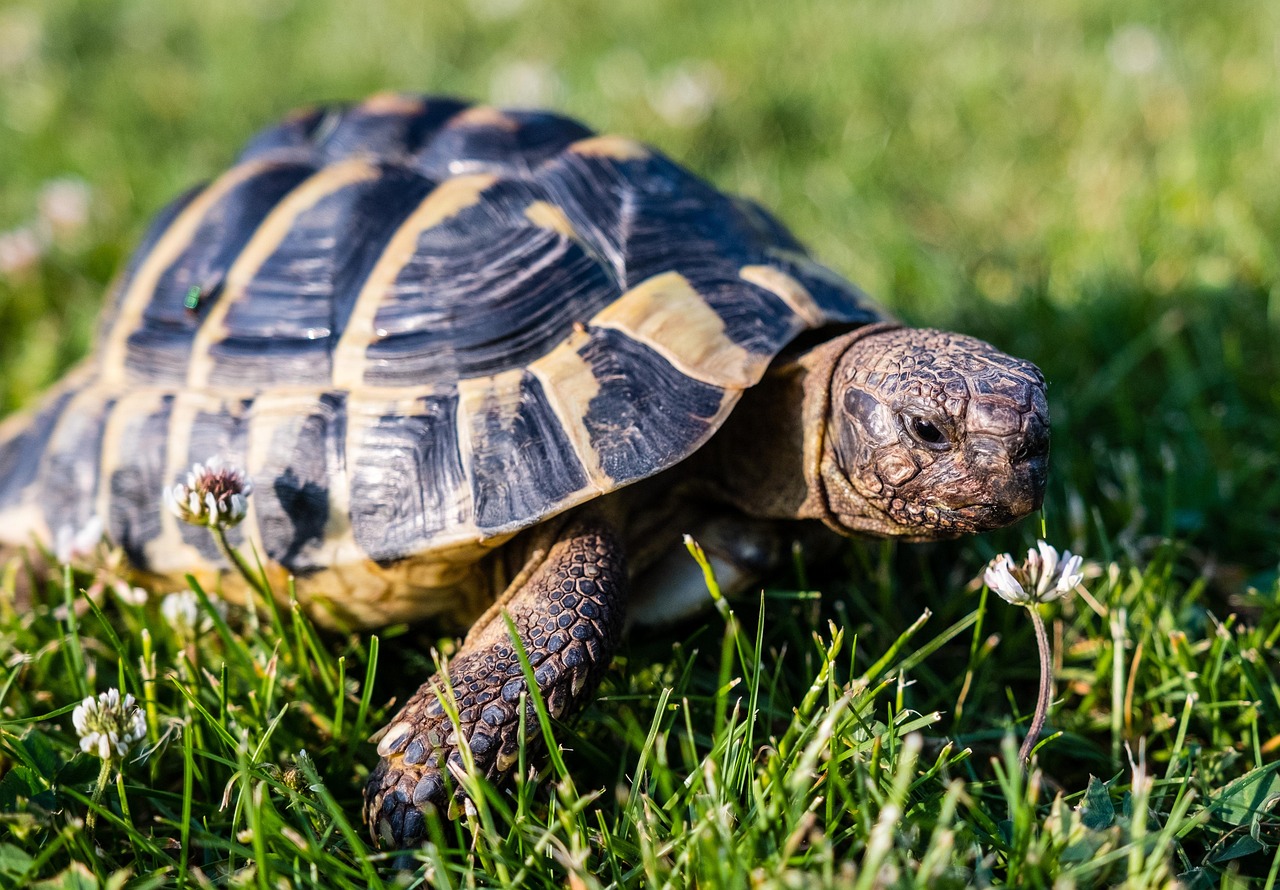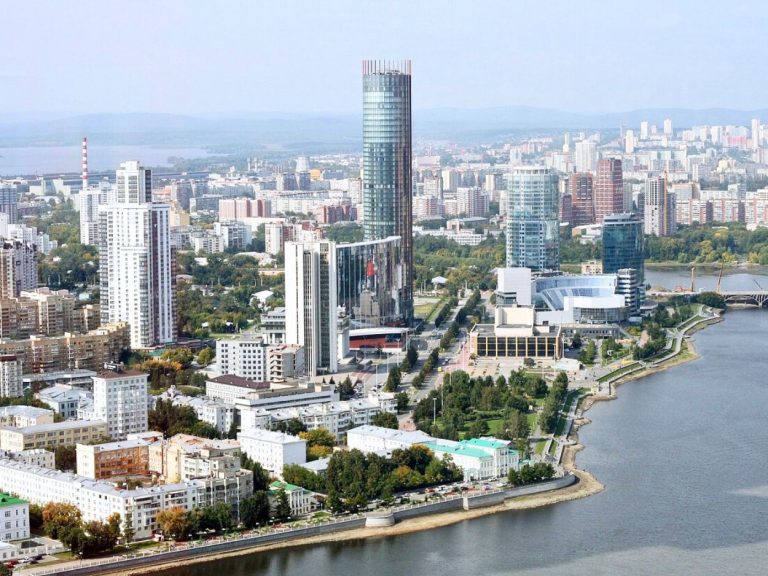Russian tortoises, Testudo horsfieldii, are bigger than they look. They come from dry hills and steppes from the Caspian Sea to China. Even two of them went to the Moon in 1968. This makes us wonder: how big do Russian tortoises get?
These tortoises are just the right size for homes. Adults are 5–10 inches (13–25 cm) long, with females a bit bigger. They weigh 0.5–2.5 pounds (300–1500 grams). Their size is important, as diet, UVB lighting, and heat affect their growth.
They are popular pets in the U.S., but it’s better to choose captive-bred ones. A size chart helps plan their enclosure. With the right care, they can live for decades.
Their numbers are listed as Vulnerable by the IUCN. To care for them, we need to know their size and growth. With the right care, they can live long, happy lives.
Russian Tortoise Size Overview and Sexual Dimorphism
This Testudo species is small and sturdy, fitting well in many homes. Their shells range from ruddy brown to near black with yellow seams. They have four toes on each front foot, making them easy to identify.
By adulthood, breeders can tell males and females apart. Females tend to be rounder. A size chart helps understand their growth, which can be uneven. Males often fight with each other.
Typical Adult Length Range: 5–10 Inches (13–25 cm)
Adults usually grow between 5 and 10 inches long. This makes handling and enclosure sizing easy. A size chart lists these measurements by age and sex.
Females vs. Males: Females 6–10 Inches, Males 5–8 Inches
Sexual dimorphism is clear. Females are 6–10 inches long, allowing for egg production. Males are 5–8 inches long, fitting their compact build.
Russian Tortoise Weight: About 0.5–2.5 Pounds (300–1500 Grams)
Adults weigh between 0.5 and 2.5 pounds. In grams, that’s 300–1500. Monitoring weight and length helps spot health issues.
Body Shape and Tail/Claw Cues to Determine Sex
- Males: Smaller overall; longer tail angled to the side; longer front claws; slit-shaped vent near the tail tip.
- Females: Larger, rounder build; shorter, thicker tail; shorter claws; asterisk-shaped vent set closer to the body.
These cues are best with an adult and a ruler. Use a size chart to confirm what you see.
| Sex | Typical Length | Common Weight | Tail & Vent | Claws | Body Notes |
|---|---|---|---|---|---|
| Female | 6–10 in (15–25 cm) | 1.2–2.5 lb (550–1500 g) | Short, thick tail; vent closer to body, asterisk-shaped | Shorter claws | Rounder profile; broader shell |
| Male | 5–8 in (13–20 cm) | 0.5–1.6 lb (300–750 g) | Longer tail; vent near tip, slit-shaped | Longer claws | More compact; more likely to spar |
How Big Do Russian Tortoises Get
Many people wonder how big Russian tortoises get. Adults are usually 5–10 inches long, fitting well in homes or small yards. Males are often 5–6 inches, while females can be 7–10 inches.
Imagine a mature male being as big as a paperback book. A female is like a small tablet. They weigh between 0.5–2.5 pounds, depending on diet and season.
It’s important to know the size of your tortoise. Measure the shell from the top to the back and weigh it weekly. This helps you keep track of their growth.
Watching your tortoise grow is exciting. They gain weight as they get older, showing they’re healthy. Tortoises from breeders grow better than those from big stores.
| Measure | Typical Range | Everyday Reference | Notes for Keepers |
|---|---|---|---|
| Adult Length (Male) | 5–6 inches | Paperback book | Often the smaller sex; monitor shell growth quarterly. |
| Adult Length (Female) | 7–10 inches | Small tablet | Broader shell; allow extra turning space in enclosures. |
| Adult Weight | 0.5–2.5 pounds | Half to over a pound of coffee | Weekly weigh-ins help in determining Russian tortoise size and health trends. |
| Growth Pattern | Juveniles: steady; Adults: stable | Gentle climb, then plateau | Record carapace length and weight in a simple logbook or app. |
| Key Factors | Diet, UVB, temperature, hydration | “Balanced light and greens” rule | These inputs shape Russian tortoise size far more than décor or substrate. |
Russian Tortoise Growth Rate and Life Stages
The journey from tiny hatchling to strong adult is steady but not straight. The growth rate of Russian tortoises moves in pulses, influenced by seasons and daily care. Good care, inspired by their steppe roots, also helps them live longer.
From Hatchling to Adult: What to Expect Over the Years
New hatchlings are small enough to fit in a palm and start growing. They can grow up to 5–10 inches as adults. Females often grow bigger than males as they get older.
Growth speeds up in warm months and slows down in cool ones or during dormancy. Young tortoises grow quickly, then slow down as they get older. With proper care, they reach adult size without sudden growth spurts.
Factors Influencing Growth Rate: Diet, UVB, Temperature, and Hydration
A diet rich in fiber is key for growth. Think of their natural diet: grasses, weeds, and leafy greens. Avoid fruit and high-protein foods that can upset their digestion.
Strong UVB lighting is essential for calcium use and shell strength. Keep their environment warm, with a basking spot around 95–100°F. Make sure they have clean water and offer regular soaks to keep them hydrated.
Healthy Weight Gain and Shell Development Indicators
Healthy growth is smooth: even scutes, no sharp pyramiding, and bright foraging. Weight should increase with length, not too fast. A firm, well-mineralized shell and clear eyes are signs of healthy development.
If you notice sudden drops in weight, soft shell edges, or sluggish feeding, check their environment and diet. Adjustments in care can help maintain a steady growth rate and protect their lifespan.
Hibernation’s Role in Seasonal Growth Patterns
Russian tortoises are built for long hibernation periods. In the wild, this can last months; at home, it’s usually 8 weeks to 5 months. During hibernation, growth slows, appetite decreases, and energy is conserved.
Before hibernation, make sure they are healthy and well-nourished. Avoid cooling down underweight or unwell animals. Proper timing helps balance hibernation with steady growth across the years.
Determining Russian Tortoise Size at Home
Measuring your Russian tortoise at home is easy and keeps their care on track. Use a soft tape to measure the straight carapace length from front to back. Make sure the tape lies flat on the shell, not along its curve, for accurate comparisons over time.
Also, track their weight along with length. Use a digital kitchen scale for young tortoises and a postal scale for adults. Weigh them at the same time each day, before a big meal or soak, to get consistent readings. This shows their health is stable outside of hibernation.
Create a size chart that logs both length and weight. For young tortoises, track monthly, and for adults, track every three months. Add notes about diet changes, new lighting, or recent brumation to spot any patterns or changes early.
Knowing the sex of your tortoise helps set size expectations. Females usually grow larger, while males are smaller. Look for a longer tail tucked to the side and longer front claws in males. Females have a short, thick tail and shorter claws.
Wild-caught tortoises need a baseline check right away. They might have parasites or respiratory issues that affect their appetite and weight. Early and consistent data helps the vet understand their health history better.
- Length: Soft tape, straight line, front to rear edges.
- Weight: Kitchen scale for juveniles; postal scale for adults.
- Schedule: Monthly for growers; quarterly for mature tortoises.
- Notes: Diet, UVB changes, temperature shifts, and hydration.
- Sexing: Tail and claw traits refine size expectations.
Russian Tortoise Size Comparison and Habitat Planning
The Russian tortoise is small but full of energy. Knowing their size helps with choosing the right habitat. A good habitat lets them move freely, not just sit in their shell.
Russian Tortoise Size Comparison With Other Testudo Species
Russian tortoises are smaller than some Testudo species. This makes them easier to handle. But, they need space to move and dig.
| Species | Typical Adult Length | Typical Adult Weight | Build & Behavior Notes | Keeper Takeaway |
|---|---|---|---|---|
| Russian Tortoise (Testudo horsfieldii) | 5–10 in (13–25 cm) | 0.5–2.5 lb (300–1500 g) | Compact, strong digger; active foragers | Smaller Russian tortoise size, but needs broad floor space |
| Hermann’s Tortoise (Testudo hermanni) | 6–11 in (15–28 cm) | Up to ~7 lb | Hardy, semi-active; enjoys visual barriers | Similar footprint; slightly longer shell in many adults |
| Greek Tortoise (Testudo graeca) | 6–12 in (15–30 cm) | 2–7 lb | Varied regional forms; steady roamers | Often requires more sight breaks and dry zones |
| Marginated Tortoise (Testudo marginata) | 12–15+ in (30–38+ cm) | 10–15+ lb | Larger-bodied; strong, confident walkers | Much bigger space demands than Russian tortoise size |
Enclosure Sizing by Life Stage: Indoor and Outdoor Recommendations
Even though Russian tortoises are small, they need a lot of space. Indoors, a 6′ x 2′ area works for one adult. But, a dedicated room or pen of 32 square feet offers better conditions.
- Hatchling/Juvenile Indoors: Broad footprint with secure sides; aim beyond a tiny tub as growth accelerates.
- Single Adult Indoors: About 6′ x 2′ as a lower bound; more space improves activity and thermoregulation.
- Single Adult Outdoors: Around 4′ x 4′ minimum with sun, shade, and dry shelter.
- Pair or Small Group Outdoors: About 8′ x 4′ or larger for sight breaks and varied terrain.
Space Planning for One vs. Multiple Tortoises
Plan the habitat before adding a companion. Males should not be housed together. Mixed-sex groups may need time-outs to prevent chasing.
- Create multiple hides, basking zones, and line-of-sight barriers.
- Use non-transparent borders to reduce escape attempts.
- Provide parallel resources—two of each key item—to cut competition.
Why Starting With the Correct Size Enclosure Matters
Starting with the right size enclosure is key. It prevents the need for frequent upgrades and keeps your tortoise healthy. A spacious habitat reduces stress, supports feeding, and keeps their size in check.
Care, Diet, and Lifespan: How Husbandry Affects Size
Size isn’t just luck for the Russian tortoise. Good care shapes their shell, weight, and growth rate. It also affects how long they live.
Nutrition for Optimal Size: High-Fiber Greens and Safe Browse
Diet is key to their structure. A yard with Bermuda, rye, or fescue grasses is great. Add safe browse like hibiscus and mulberry leaves for extra fiber.
Indoors, mix dark leafy greens like romaine and kale. Add small amounts of spinach or broccoli. But, fruit like banana should be rare to avoid weight issues.
Use calcium products like TUMS on salads. A weekly mineral boost like Miner-All is also important for young tortoises.
Lighting, Heat, and Humidity to Support Proper Growth
Use UVB light and a bright white lamp for day and night. Keep the basking spot at 95–100°F. Use a thermostat and thermometer to check temperatures.
Make sure they have water to drink. Change it often to avoid parasites. For young tortoises, a damp hide helps prevent shell problems.
Captive-Bred vs. Wild-Caught: Health and Long-Term Size Outcomes
Captive-bred tortoises grow better and stay healthier. They have fewer parasites and grow more steadily. This leads to better size and shell quality.
Choosing captive-bred means less vet visits and better growth. This helps them reach a healthy adult size faster.
Russian Tortoise Lifespan: Up to 50 Years With Proper Care
With the right diet and care, Russian tortoises can live up to 50 years. Proper hibernation helps keep them healthy and balanced.
Long-lived pets need consistent care. Good feeding, clean water, and proper heat and UVB lead to a long, healthy life.
Conclusion
Russian tortoises are small but mighty. Adults are 5–10 inches long and weigh 0.5–2.5 pounds. Females are usually a bit bigger than males.
How big they get depends on their health. A healthy tortoise grows steadily, has a firm shell, and stays active all year.
Care is key to their size. They need fiber, calcium, UVB, and a proper heat gradient. Drinking water and safe hibernation also matter.
Even though they’re small, they need space. Provide room to move, different textures, and safe areas. This helps them grow strong and calm.
For those comparing sizes, Russian tortoises are smaller than some cousins. But they’re tough, curious, and even went to space. With proper care, they can live a long time, showing that size doesn’t matter.
FAQ
How Big Do Russian Tortoises Get?
Adults usually grow to 5–10 inches in shell length. Females are often larger, reaching 6–10 inches. Males are slightly smaller, averaging 5–8 inches.
Think of a paperback book for a male and a small tablet for a female.
What’s the Russian Tortoise Growth Rate From Hatchling to Adult?
Growth is steady but depends on the season. Hatchlings grow quickly, then slow down. It can take 5–10 years for them to reach near-adult size.
Females often grow larger than males over time.
How Do I Determine Russian Tortoise Size At Home?
Measure their shell length with a soft tape. Weigh them on a digital scale. Keep a chart to track their growth.
How Can I Tell a Male From a Female by Size and Features?
Females are generally larger and rounder. Males have longer tails and claws. They also have a slit-shaped cloacal vent near the tail tip.
Females have a shorter, thicker tail and an asterisk-shaped vent.
How Does Russian Tortoise Care Affect Size and Shell Quality?
Proper diet, UVB lighting, heat, and hydration are key. Offer fiber-rich greens and weeds. Provide proper calcium and a 95–100°F basking spot.
Keep their water clean for overall health.
What Role Does Hibernation Play in Russian Tortoise Growth?
Hibernation slows growth and resets their cycles. In captivity, they hibernate for 8 weeks to 5 months. Only hibernate healthy tortoises after a vet check.
How Does Russian Tortoise Size Compare With Other Testudo Species?
Russians are compact compared to larger Testudo like the marginated tortoise. Their 5–10 inch frame is small for their genus, making them appealing pets.
What Enclosure Size Fits a Russian Tortoise?
Indoors, aim for at least 6′ x 2′ for one adult. Larger setups can be 8′ x 4′. Outdoors, start with 4′ x 4′ for a single adult.
Use solid, opaque walls and dig-proof edges.
Can I Keep More Than One Russian Tortoise Together?
Plan space carefully. Never house males together. Groups of females may work in larger pens with sight breaks and multiple hides.
Mixed-sex setups often need seasonal separation to prevent harassment.
Why Start With the Correct Size Enclosure?
Proper space supports roaming, thermoregulation, and natural foraging. It reduces stress and pacing, which can blunt appetite, stall growth, and undermine shell health.
What Should a Russian Tortoise Eat to Reach a Healthy Adult Size?
Focus on high-fiber greens and safe browse: grasses, weeds, romaine, leaf lettuces, escarole, collards, kale, mustard and turnip greens, plus hibiscus or mulberry leaves. Offer fruit rarely and dust light calcium.






